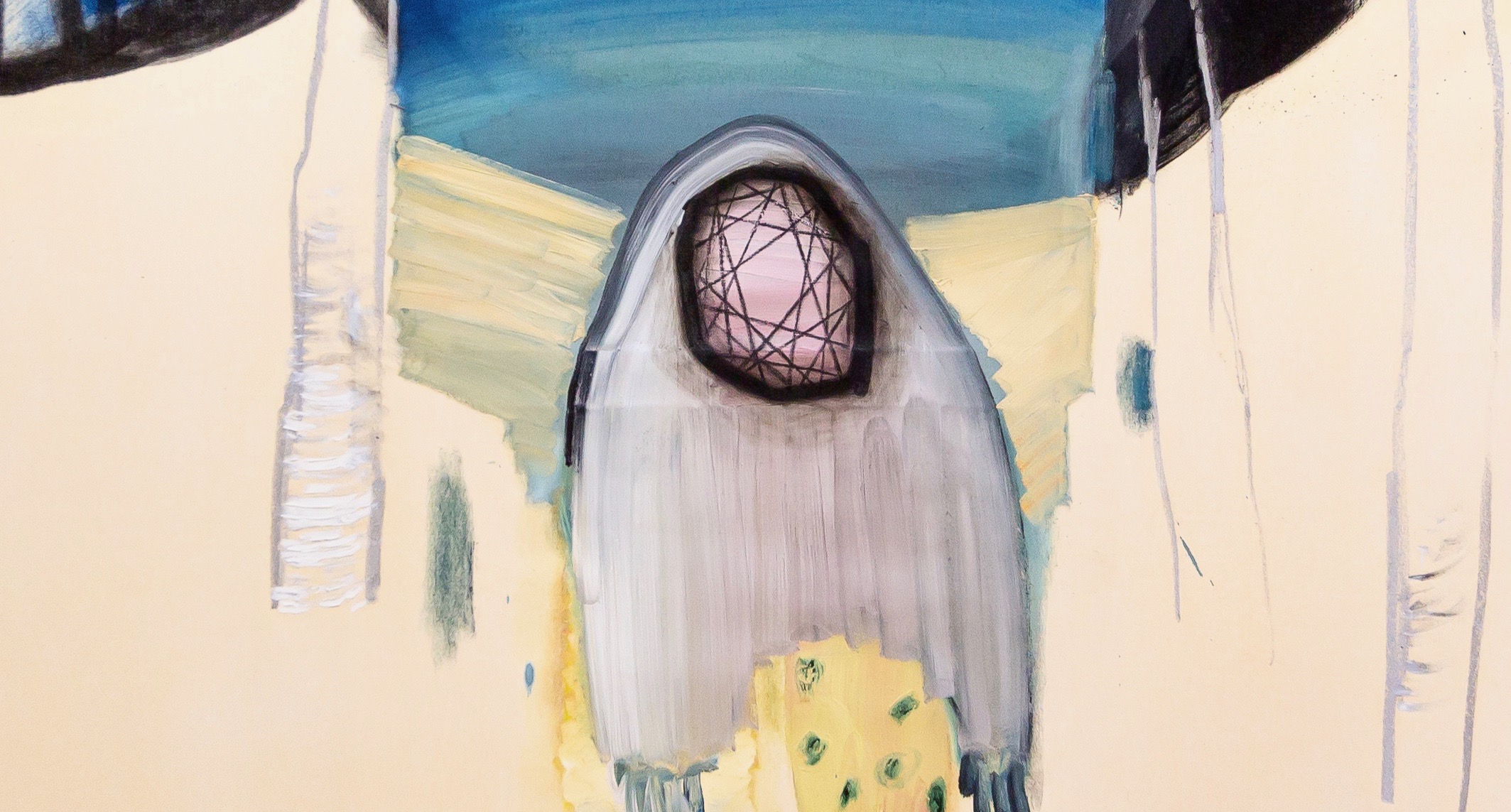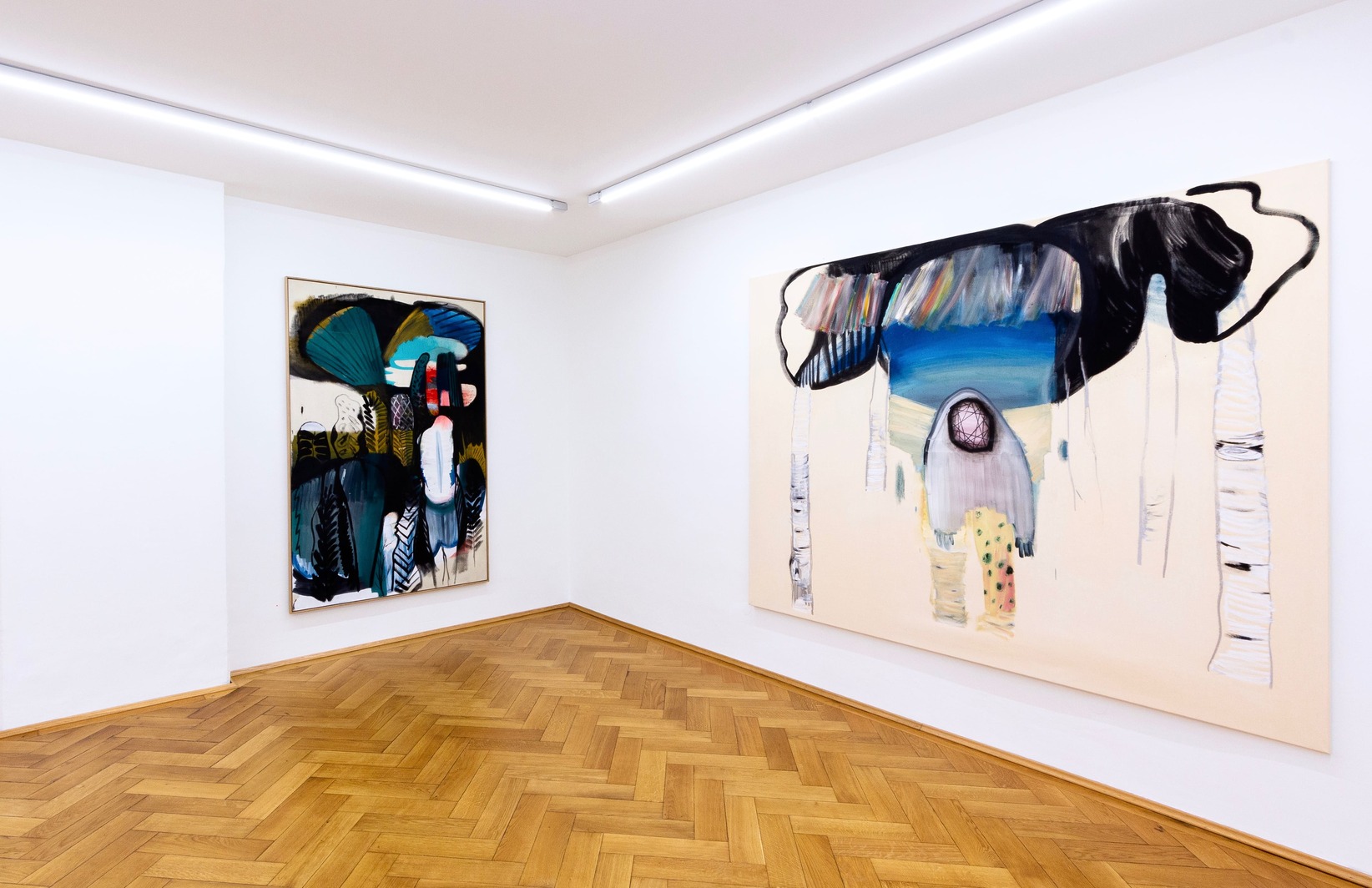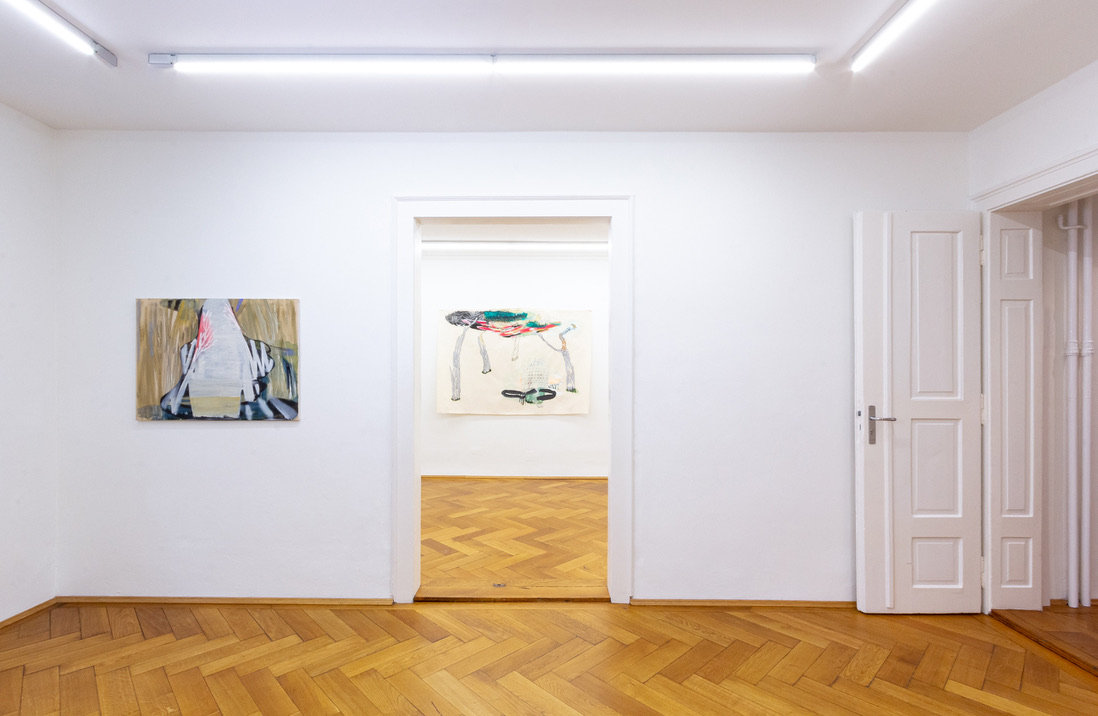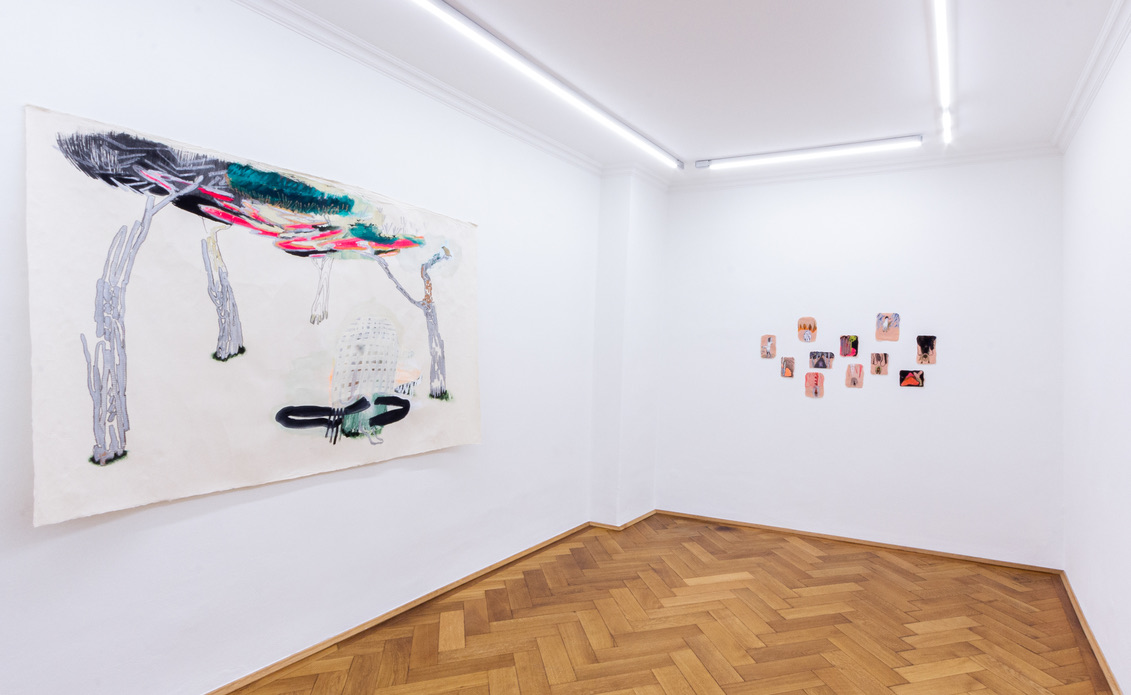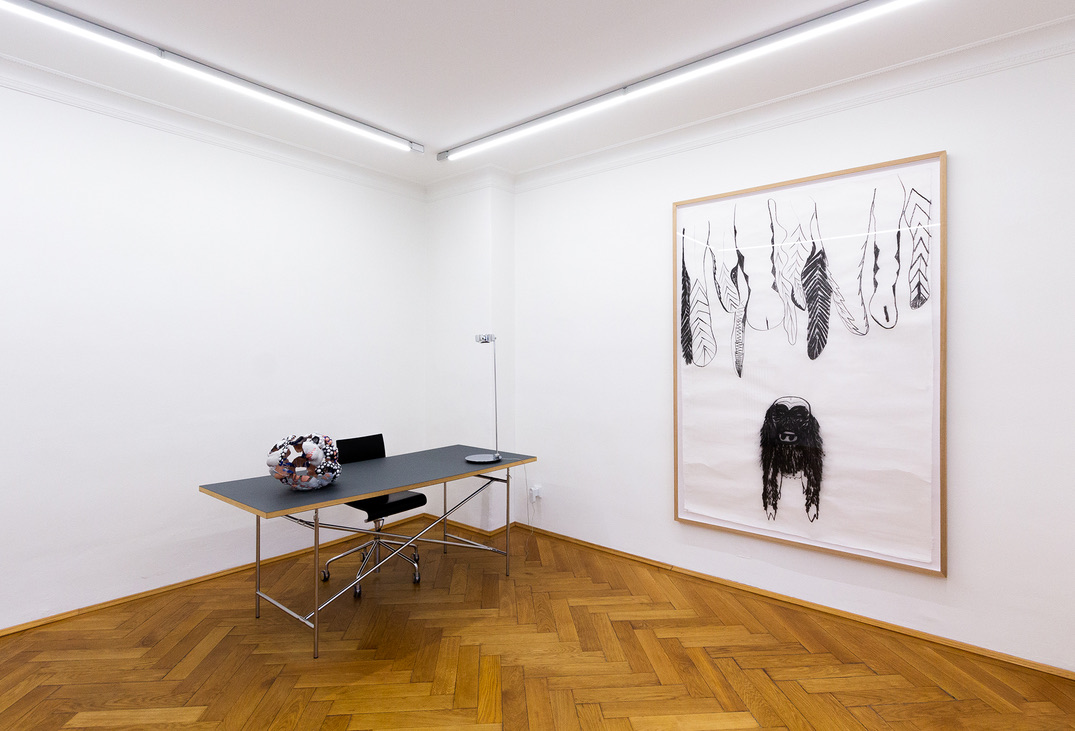This exhibition constitutes a panorama of dreamlike landscapes populated by seemingly dematerialized figures. We find ourselves before hybrid creatures, whose temporary appearances have just become manifest or are about to dissolve on the material carrier. They may not always be immediately located or defined, since they blend in with their landscape environment with no firm delineation. But sometimes these narrative picture elements can be discovered right away as wild boars, cats, raccoons or persons deep in meditation, playing with our perception upon the oversized picture formats. Ambivalent in their appearances, they are somewhere between threatening and peaceful, abstract and figurative, mystical and profane.
Even though each work stands on its own as a self-contained cosmos, the colorfully-glowing picture landscapes seem to communicate with one another nevertheless. In doing so, the choice of the large formats is striking, in which East-Asian, animistically-charged landscape portrayals come up against profane motifs taken from our everyday lives. Youjin Yi is aware of the aesthetic tradition that nurtures her picture compositions. Raised in Gangneung, South Korea, she first studied at Sejong University in Seoul. After traveling in Europe, she decided to study with Günther Förg at the Akademie der Bildenden Künste in Munich, graduating from there as a master student (2004-2011). To supplement her education, she became a guest student with Leiko Ikemura at the Universität der Künste in Berlin (2008). It was during this time that she found her way back to an East-Asian understanding of painting. As with the work of her professor, the dualism between the Asian and the Western world has solidified into an essential component of Youjin Yi’s art – and the artistic practice has become a grappling with her own identity.
Subliminal processes are what determine the composition for Youjin Yi. She brings about her mystical-seeming settings by working on the floor in an intuitive creative process of subjective feeling. Due to the view from above, rules regarding perspective are suspended and the possibility of any hierarchy is prevented. Departing from several picture centers, the composition is able to unfold congruently across the paper or canvas.
The artist plays on ambivalencies not only with her picture subjects, but also in her compositions: She pits opaque color surfaces against fine graphic elements, pastel colors meet deep black, interior and exterior spaces are reversed. Over and over again, the grid motif may be found in her painterly positions. Individual figures are surrounded, enveloped almost, in these nets, such as in the work “In Meditation” (2019, oil, oil pastel chalk on canvas, 135 x 200 cm). In the works “Tesselierung/Tesselation” (2019, oil, oil pastel chalk on canvas, 200 x 250 cm) or “Fechtmaske/Fencing Mask” (2019, charcoal on Korean paper, 200 x 135 cm), the faces of the figures are replaced by masklike hatchings. In this way, they are rendered anonymous and provide the viewer with a possibility for his or her own projections. Similar grid structures can be found in many of her works and may be understood as being reminiscent of Günther Förg.
Decisive for Youjin Yi’s picture tales is that she consciously leaves space empty on her picture carrier, elevating this to a compositional element in her painting. Due to these areas of controlled omissions, voids and interim spaces come about that reveal lower picture levels and indicate subliminal processes. Here the artist speaks of a “beauty of the void”, which positions itself as a contrast to the western striving for an intellectual charging of a work. This “beauty of the void” is clear not only in the canvas works but also above all in the charcoal drawings on paper. These works are exemplary of an East Asian understanding of painting: In this, they are executed on the traditional handmade “Hanji” from Korea, created from the mulberry tree in an elaborate production process. Unlike the canvas works, the picture ground of the Hanji remains completely free of color. Upon this space of white, the artist uses her charcoal pencil like a knife, alternating between sometimes more, sometimes less pressure applied to the fragile paper.
The artist is presenting her new groups of works of the “Polymer Sculptures” and the “Polymer Panels” for the very first time. The biomorphic creatures of the “Polymer Sculptures” seem as if they might derive from her painterly works. First coming about digitally, next they are translated into three dimensions by means of a 3D printing process and then finally, they are painted with acrylic paint markers and brush pen. They stand out for their haptic quality, being neither heavy nor massive, but rather bearing an inherent lightness redolent of the dematerialized character of the artist’s painterly figures. The works make us think of the biomorphic, fragile sculptures of Korean artist Yeesookyung. In the “Polymer Panels”, the artist increasingly deals with the theme of corporealty, which is heightened by the flesh color of the picture carrier. With these new positions, Youjin Yi has expanded her artistic oeuvre, countering her traditionally handmade “Hanji” works with an artificial, industrial materiality.

